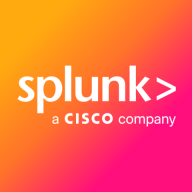

Nagios XI and Splunk Observability Cloud compete in the IT monitoring tools category. Splunk Observability Cloud holds the upper hand with its advanced analytics and robust performance monitoring.
Features: Nagios XI stands out for its open-source flexibility, customization capabilities, and real-time alerting, making it highly adaptable for various IT environments. Splunk Observability Cloud excels with its comprehensive data analytics, advanced application performance monitoring, and customizable dashboards that facilitate in-depth analysis and powerful integrations.
Room for Improvement: Nagios XI requires enhancements in scalability and simplification of configuration, along with the addition of built-in clustering and failover features. Splunk Observability Cloud could improve its user interface and third-party integration, and streamline configuration processes to optimize cost-effectiveness and broaden user adoption.
Ease of Deployment and Customer Service: Nagios XI is predominantly deployed on-premises, supported by a strong community offering extensive resources, but may require technical expertise to manage. Splunk Observability Cloud offers versatile deployment options for cloud and hybrid environments, with customer service noted for responsiveness, although occasionally challenged by complex issues.
Pricing and ROI: Nagios XI's open-source model provides substantial value, particularly for small to medium operations, with negligible initial costs enhancing immediate ROI despite setup complexity. Splunk Observability Cloud, perceived as costly, offers scalable pricing justified by its advanced analytics, appealing to enterprises that require sophisticated monitoring solutions for significant operational insights and efficient data handling.
Using Splunk has saved my organization about 30% of our budget compared to using multiple different monitoring products.
Anyone working in front-end management should recognize the market price to see the true value of end-user monitoring.
I have definitely seen a return on investment with Splunk Observability Cloud, particularly through how fast it has grown and how comfortable other teams are in relying on its outputs for monitoring and observability.
On a scale of 1 to 10, the customer service and technical support deserve a 10.
They have consistently helped us resolve any issues we've encountered.
They often require multiple questions, with five or six emails to get a response.
If the user interface isn’t presenting data well, it becomes difficult to manage when scaling.
We've used the solution across more than 250 people, including engineers.
As we are a growing company transitioning all our applications to the cloud, and with the increasing number of cloud-native applications, Splunk Observability Cloud will help us achieve digital resiliency and reduce our mean time to resolution.
I would rate its scalability a nine out of ten.
It is very stable.
I would rate its stability a nine out of ten.
We rarely have problems accessing the dashboard or the page.
Unlike NetScout or regular agents for APM, RUM has many problems during the POC phase because customer environments vary widely.
Many tools have poor user interfaces, making them hard to manage and navigate.
The GUI could be improved. It's a bit too basic.
The out-of-the-box customizable dashboards in Splunk Observability Cloud are very effective in showcasing IT performance to business leaders.
The next release of Splunk Observability Cloud should include a feature that makes it so that when looking at charts and dashboards, and also looking at one environment regardless of the product feature that you're in, APM, infrastructure, RUM, the environment that is chosen in the first location when you sign into Splunk Observability Cloud needs to stay persistent all the way through.
There is room for improvement in the alerting system, which is complicated and has less documentation available.
We are using the free, open-source version.
The pricing for the Nagios XI product is good and better than other solutions.
Splunk is a bit expensive since it charges based on the indexing rate of data.
It is expensive, especially when there are other vendors that offer something similar for much cheaper.
It appears to be expensive compared to competitors.
Nagios XI simplifies our setup and reduces the time spent configuring monitoring tools.
The alerting system is very effective.
Splunk provides advanced notifications of roadblocks in the application, which helps us to improve and avoid impacts during high-volume days.
For troubleshooting, we can detect problems in seconds, which is particularly helpful for digital teams.
It offers unified visibility for logs, metrics, and traces.
| Product | Market Share (%) |
|---|---|
| Splunk Observability Cloud | 1.3% |
| Nagios XI | 2.5% |
| Other | 96.2% |


| Company Size | Count |
|---|---|
| Small Business | 22 |
| Midsize Enterprise | 17 |
| Large Enterprise | 21 |
| Company Size | Count |
|---|---|
| Small Business | 20 |
| Midsize Enterprise | 10 |
| Large Enterprise | 46 |
Nagios XI provides monitoring of all mission-critical infrastructure components, including applications, services, operating systems, network protocols, systems metrics, and network infrastructure. Third-party add-ons provide tools for monitoring virtually all in-house and external applications, services, and systems.
Nagios XI uses a powerful Core 4 monitoring engine that provides users with the highest levels of server monitoring performance. This high degree of performance enables nearly limitless scalability and monitoring powers.
With Nagios XI, stakeholders can check up on their infrastructure status using the role-based web interface. Sophisticated dashboards enable access to monitoring information and third-party data. Administrators can easily set up permissions so users can only access the infrastructure they are authorized to view.
Nagios XI Benefits and Features
Some of the benefits and top features of using Nagios XI include:
Reviews from Real Users
Nagios XI stands out among its competitors for a number of reasons. Several major ones are its integration options and monitoring abilities, as well as its alerting features.
David P., a senior DevOps engineer at EML Payments Ltd, writes, “We use Nagios as a network discovery tool. We use Nagios to maintain our uptime statistics and to monitor our services. It has allowed us to be much more sophisticated in our monitoring and alerting.”
An IT-OSS manager at a comms service provider notes, “Nagios XI has a custom API feature, and we can expose custom APIs for our integration. This is a great feature.”
Splunk Observability Cloud offers sophisticated log searching, data integration, and customizable dashboards. With rapid deployment and ease of use, this cloud service enhances monitoring capabilities across IT infrastructures for comprehensive end-to-end visibility.
Focused on enhancing performance management and security, Splunk Observability Cloud supports environments through its data visualization and analysis tools. Users appreciate its robust application performance monitoring and troubleshooting insights. However, improvements in integrations, interface customization, scalability, and automation are needed. Users find value in its capabilities for infrastructure and network monitoring, as well as log analytics, albeit cost considerations and better documentation are desired. Enhancements in real-time monitoring and network protection are also noted as areas for development.
What are the key features?In industries, Splunk Observability Cloud is implemented for security management by analyzing logs from detection systems, offering real-time alerts and troubleshooting for cloud-native applications. It is leveraged for machine data analysis, improving infrastructure visibility and supporting network and application performance management efforts.
We monitor all Network Monitoring Software reviews to prevent fraudulent reviews and keep review quality high. We do not post reviews by company employees or direct competitors. We validate each review for authenticity via cross-reference with LinkedIn, and personal follow-up with the reviewer when necessary.